Next Generation of 3PAR
If you were at HPE Discover in June (2019) or if you follow HPE technology development, then I know you’ve heard about HPE Primera, HPE’s newest Tier-0 storage array and an evolution of the HPE 3PAR StoreServ Family. Since the announcement, I’ve been getting a few questions about Primera from our clients. It seemed appropriate to answer some of those questions in this month’s post.
What is HPE Primera?
HPE Primera is a Tier-0 enterprise storage solution designed with extreme resiliency (100% uptime guarantee) and performance targeted at the most critical workloads that simply cannot fail. The key word here is “critical”. HPE Primera is not intended to be a default replacement for the HPE 3PAR StoreServ 8000 and 9000 arrays. Your requirements could certainly dictate an HPE Primera solution, but, Nimble (HPE Tier-1 solution) may be a better fit.
At launch, HPE Primera includes three models: HPE Primera 630, HPE Primera 650, and HPE Primera 670. Each model is available as an all-flash version (A630, A650 and A670). These models come in 2 and 4-Node versions. In the graphic below, you can see how the current HPE Primera models might line up with the HPE 3PAR StoreServ and Nimble Models:
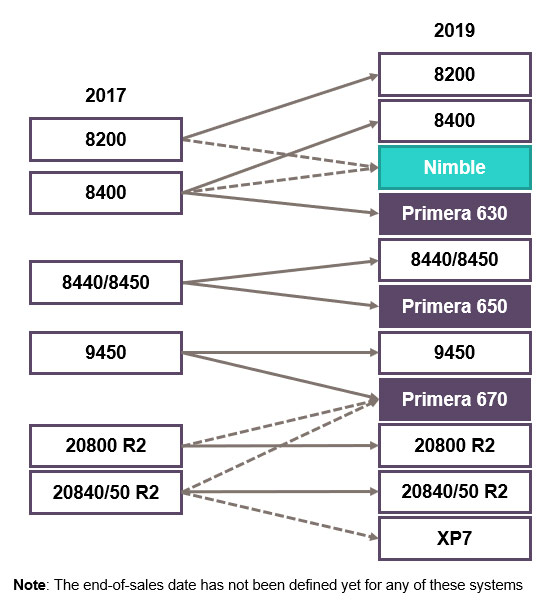
Isn’t Primera just the latest 3PAR Array?
Well, in many ways, the answer is yes. But, more precisely it is an Evolution of the HPE 3PAR StoreServ Family. It is the same in that:
- You can have up to 4-Nodes in a Single Array.
- The Nodes are Active/Active.
- The architecture for each node is based on Intel Processors, ASICs and Cache.
- There are all flash and Hybrid options.
- They all support Thin Provisioning, Deduplication, and Compression.
- Many of the feature sets are identical (i.e., Remote Copy, Virtual Copy, Multi-tenancy, Virtual Domains, etc.) across the arrays.
- Management is done through the SSMC Interface.
- There is a Service Processor to manage notification, upgrades, phone home to HPE, etc.
- Both come with all-inclusive software (no separate licenses).
- Both are all integrated with HPE InfoSight.
HPE Primera is different from the 3PAR StoreServ arrays in these ways:
- The Gen 5 ASIC in the HPE 3PAR StoreServ was designed for all-flash and uses a distributed cache where the CPU utilizes the Control Cache and the ASIC the Data Cache. The HPE Primera is designed for NVMe and has a Unified Cache.
- The Service Processor on the HPE 3PAR StoreServ is a separate physical or virtual appliance. On the HPE Primera the Service Processor is integrated into the Nodes.
- In the initial launch the HPE Primera will only support Fibre Channel Connectivity.
- The HPE 3PAR StoreServ supports CPG’s utilizing RAID 0, 1, 5 or 6. The HPE Primera utilizes only RAID 6.
- Because of the significant change in node architecture and some advancement in features, HPE Primera uses a different InForm OS Code Base than the HPE 3PAR StoreServ Family of arrays.
Is the HPE 3PAR StoreServ Family (8000, 9000) End of Life now?
The short answer is No. HPE has not announced the End of Life (EOL) for the HPE 3PAR StoreServ. When an EOL announcement is made, customers will still be able to purchase them up to 6 months afterward. Hardware upgrades will continue to be made available up to 3 years after the announcement and support will be provided for 5 years after the EOL announcement. This is HPE’s normal cycle when an EOL is announced for an enterprise solution and it will hold true for the HPE 3PAR StoreServ family.
If I’m looking at a 3PAR now, shouldn’t I just go with the Primera instead?
Not necessarily. Remember, there has been no EOL announcement made for the HPE 3PAR StoreServ. And you’ll have 5 years of support once the announcement is made. Also, the Primera is designed for the most Critical workloads in terms of availability and performance requirements. The HPE 3PAR StoreServ or a Nimble Array may line up more appropriately with your unique requirements.
In Summary
HPE Primera is an evolution of the HPE 3PAR StoreServ family and it will fill the needs of Tier-0 workloads. While many of the features and functionality are the same between Primera and StoreServ families, there are also significant differences in architecture. For many, the current HPE 3PAR StoreServ Family (8000/9000) may still be the right fit. For others, a Nimble solution may be the best solution. Contact Zunesis to find the right storage solution for your organization.
Who’s on First?
Not having a Project Manager as it pertains to IT Services is like watching Laurel and Hardy’s, “Who’s on First routine.”
Examples of this routine can be put into Services terminology:
- When there are three different answers as to when a piece of equipment is going to arrive for installation / implementation.
- And there are three different dates when installation / implementation begins.
- There are four, not three, engineers scheduled to do the work when only one is needed.
- There’s actually six different points of contact at the client’s environment.
- Who’s in charge of this project being completed? The Sales Rep? The Engineer?, The Client? And so on…
- Nobody pays attention and simply shows up at the site in order to correct the environment using a screwdriver when they actually need a jack-hammer.
Simply, complete chaos, and you wonder how we even have stop lights that work, operating systems that actually turn on with no blue screen, etc., etc.
There has to be someone behind the scenes prodding the hamster in the wheel. Reminding the honey bees to pollinate and knowing that someone in wireless networking might not be the best choice to conduct a Nimble Installation. You can’t show up to a football game wearing tennis clothes. Do you see what I am getting at?
Project Management
Project Management, on so many levels, is a necessary evil at times. Without it, work results in rework, deduplication of costs and opportunity cost lost; not to mention credibility.
If your firm doesn’t have someone or a team of Project Managers who’s going to make sure the following occurs once the Purchase Order has arrived; you may want to rewrite your business model:
- Ordering of Equipment
- Identification of appropriate resources
- Availability of appropriate resources
- Scheduling a Kickoff call with internal and external clients.
- Understanding the scope of work and how long implementations take
- Setting expectations with clients
- Clients setting expectations with their vendors
- Identifying a timeline
- Keeping that timeline and continuously updating the client with work-performed summaries on a daily and/or weekly basis.
- Managing the client and not having the client manage the vendor
- Summary of implementation completed and acknowledgement that project is fulfilled.
Or, maybe create an organization chart for projects which clearly identifies the integral participants of the initiative.
These items are very high level with several subsets. Do you think a team with no leader would be able to perform these and exceed client expectations? Do you think a team with many who think they are leaders are able to perform implement and exceed expectations? Not to go political, but I think they call that last analogy, Congress!
Who’s on first; The Project Manager is. What’s on second; the scope of the project. And so on and so on. It’s not brain surgery folks and yet we hear of so many service firms that don’t practice this for the real game.
Guess what, we do and we practice it every day. It’s called continuous improvement…
A Retrospect: 2004 vs 2019
It’s an exciting time to be a part of Zunesis as we near our company’s 15-year anniversary this October!
15 years is an impressive milestone for any business to cross. It’s especially exciting for a technology company, like ourselves, when you stop and think about how much has changed in our industry since 2004. From solutions, vendors, methods, products…even technology itself has changed vastly over the past 15 years.
I feel like 15 years is kind of a unique amount of time in that it simultaneously sounds minimal and massive. 2004 seems like just yesterday, and also a lifetime ago. At least that’s how it feels to me. I graduated high school in 2004 so maybe that has just permanently altered my perception of that year. Either way, here is a look at some other notable things that happened in 2004. You may be surprised that it has already been 15 years since some of these things have occurred (or maybe you thought they happened longer ago? I don’t know). The fact remains that a lot has changed since then. And awaaay we go!
What happened?
(2004)
NASA’s Spirit Rover touches down on the surface of Mars.
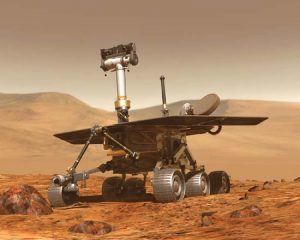
Now (2019)
Spirit exceeded all expectations and remained operational until 2009 when it became stuck in soft sand. Contact was lost with the rover in March of 2010, but NASA has launched several other Mars missions since Spirit’s initial touchdown.
What happened?
(2004)
 The Summer Olympic Games are held in Athens Greece. An event most notable by the breakout performance of swimmer Michael Phelps who won six gold medals and two bronze medals, tying the then record for amount of medals won at a single Olympics, while only 19 years old.
The Summer Olympic Games are held in Athens Greece. An event most notable by the breakout performance of swimmer Michael Phelps who won six gold medals and two bronze medals, tying the then record for amount of medals won at a single Olympics, while only 19 years old.
Now (2019)
Well let’s just say Mr. Phelps has been busy! Since the summer games of 2004, he has won 20 additional medals for a total of 28 (including 23 gold medals) making him the most decorated Olympian in history and, arguably, the greatest swimmer of all time. Atta boy!
What happened?
(2004)
 The NBC television sitcom, Friends, airs its final episode on May 6th, 2004. An event watched by 52.5 million viewers.
The NBC television sitcom, Friends, airs its final episode on May 6th, 2004. An event watched by 52.5 million viewers.
Now (2019)
Friends has had a lasting impact on pop culture and the “buddy-sitcom” format, with droves of loyal fans. Today you can almost always find reruns on TBS as well as the entire series available to stream on Netflix (thanks in part to a massive outcry by fans when rumors spread that the show may be removed from the platform). To this day, the Friends finale stands as the most watched episode of any television series throughout the 2000’s and the fifth most watched television finale in U.S. History.
What happened?
(2004)
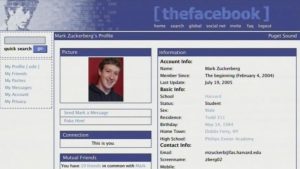 Mark Zuckerberg and his college roommates launch “Facebook”, a social networking site only available to students of Harvard University.
Mark Zuckerberg and his college roommates launch “Facebook”, a social networking site only available to students of Harvard University.
Now (2019)
Oh man. Talk about change! Facebook is now one of the most valuable companies on the planet with over 2 billion users and the distinction of being included in the “Big Four” technology companies along with Google, Amazon, and Apple. The site has had a significant impact on society, communication and culture. Jesse Eisenberg even starred in an Academy Award nominated film about the birth of the site. Who would’ve ever expected THAT back in 2004?
What happened?
(2004)

Caleb Clark crowned 2004 Limon High School Senior Prom King
Now (2019)
Fun Fact: I’m still Prom King to this day
What happened?
(2004)

The Boston Red Sox win their first world Series since 1918, ending an 86-year championship drought.
Now (2019)
The Red Sox have won three additional championships since 2004 (including one in 2007 against our own Colorado Rockies ☹ *sniffle*). This made them the first team to win four World Series trophies in the 21st century. I guess 2004 was the kick in the pants that they needed!
What happened?
(2004)

Ken Jennings goes on massive 74-game winning streak on the TV gameshow Jeopardy!, winning over 2.5 million dollars in the process.
Now (2019)
The unprecedented nature of Jennings’ winning streak breathed new life into both the gameshow’s ratings and popularity, becoming TV’s highest-rated syndicated program during Jennings’ run. He remains the record holder for longest winning streak in the show’s history and is often asked back to compete in special tournaments.
What happened?
(2004, [saved the best for last!])
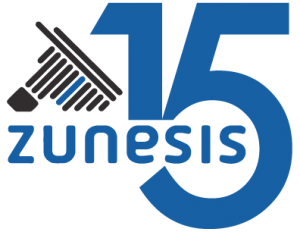
Zunesis is founded as an IT solutions provider.
Now (2019)
Zunesis was started primarily as a hardware reseller and professional services provider. While that portion of our culture remains unchanged, the technologies we work with and the ways we deliver some of those services changes constantly to keep pace with the ever-evolving world of IT! We now have cloud offerings for both products and services, security platforms, data center advisory services, hybrid IT solutions and a myriad of others.
Change is not only inevitable, it is often necessary in our fast-paced world. Here’s to another 15 years from the folks at Zunesis! Cheers!
Data Center Tiers
Data Center tiers are an efficient way to describe the infrastructure components being utilized at a business’s data center. Although a Tier 4 data center is more complex than a Tier 1 data center, this does not necessarily mean it is best-suited for an organization’s needs. While investing in Tier 1 infrastructure might leave a business open to risk, Tier 4 infrastructure might be an over-investment.
Tier 4 Data Center: A Tier 4 data center is built to be completely fault tolerant and has redundancy for every component. It has an expected uptime of 99.995% (26.3 minutes of downtime annually).
Tier 3 Data Center: A Tier 3 data center has multiple paths for power and cooling and systems in place to update and maintain it without taking it offline. It has an expected uptime of 99.982% (1.6 hours of downtime annually).
Tier 2 Data Center: A Tier 2 data center has a single path for power and cooling and some redundant and backup components. It has an expected uptime of 99.741% (22 hours of downtime annually).
Tier 1 Data Center: A Tier 1 data center has a single path for power and cooling and few, if any, redundant and backup components. It has an expected uptime of 99.671% (28.8 hours of downtime annually).
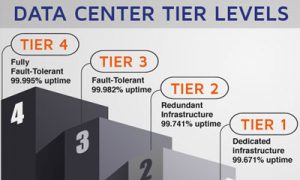
Tier 4 Data Center Requirements
- Zero single points of failure – Redundancies for every process and data protection stream. No single outage or error can shut down the system.
- 995 % uptime per annum
- 2N+1 infrastructure (two times the amount required for operation plus a backup) – Fully redundant
- No more than 26.3 minutes of downtime per annum – Some downtime is allowed for optimized mechanical operations; however, this annual downtime does not affect user operations.
- 96-hour independent power outage protection – This power must not be connected to any outside source and is entirely proprietary. Some centers may have more.
Tier 4 is considered an enterprise-level service. Tier 4 has approximately twice the site infrastructure of a Tier 3 location.
If you need to host mission-critical servers, this is the level to use. Tier 4 data centers ensure the safety of your business regardless of any mechanical failures. You will have backup systems for cooling, power, data storage, and network links. Data Center Security is compartmentalized with biometric access controls. Full fault tolerance keeps any problems from ever slowing down your business. This is true even if you host less critical servers in other tier levels.
This tier also ensures optimized efficiency. Your servers are housed in the most physically advantageous locations. This drastically extends the life of your hardware. If the temperature and humidity are kept consistent, you gain a great deal of efficiency. Even the backups and dual power sources are treated like primaries.
.
Tier 3 Data Center Requirements
- 982 % uptime per annum
- N+1 fault tolerance (two times the amount required for operation plus a backup) – Ability to undergo routine maintenance without a hiccup in operations. Unplanned maintenance and emergencies may cause problems that affect the system. Problems may potentially affect user-facing operations
- No more than 1.6 Hours of downtime per annum – Downtime is allowed for maintenance and overwhelming emergency issues.
- 72 hours independent power outage protection – at least three days of exclusive power. This power cannot connect to any outside source.
Tier 3 provides most of the features of a Tier 4 infrastructure without some of the elite protections. For instance, the data center has the advantage of dual power sources and redundant cooling and the network streams are fully backed up. Guaranteed uptime is slightly less than Tier 4, and the system is not entirely fault-tolerant.
Tier 2 Data Center Requirements
- 741 % uptime per annum
- No more than 22 Hours of downtime per annum – There is a considerable jump between levels 2 and 3 regarding downtime. Redundancy is one of the primary reasons for this.
- Partial cooling and multiple power redundancies – A Tier 2 Data center will not have redundancy in all areas of operation. The most critical aspects of its mechanical structure receive priority. These two aspects are power and cooling distribution. Redundancy in these areas is only partial. No part of the system is fault tolerant.
The utility of a Tier 2 Data center is fundamentally different. If your business prioritizes redundant capacity components, then you may want to look at this level of infrastructure.
Tier 1 Data Center Requirements
- 671 % uptime per annum
- No more than 28.8 Hours of downtime per annum – There is a considerable jump between levels 2 and 3 regarding downtime. Redundancy is one of the primary reasons for this.
- Zero redundancies – A Tier 1 Data center will not have redundancy in any part of its operations. Facilities do not have any redundancy guarantees within its power and cooling certification process.
The use of the Tier I infrastructure designed for companies with a need for a colocation data center. This is the most budget conscious option for a business. The infrastructure consists of a single uplink, a single path for power, and non-redundant servers.
The tier classification system is another way of assessing redundancy and uptime reliability as you determine your organizations’ data center needs. Contact Zunesis to talk about your data center needs.
A Moment in History: Environmental Disaster
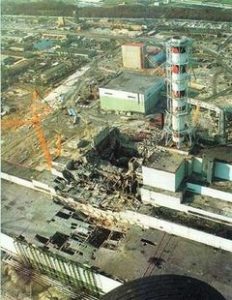 On April 26, 1986, there was a large and highly destructive steam explosion in the number 4 Nuclear Reactor of the Chernobyl Nuclear Power Plant. This steam explosion ruptured the reactor core and caused an open air reactor core fire. This open air reactor fire went on for 9 days and spread a considerable amount of radioactive contamination over parts of the former USSR and Europe.
On April 26, 1986, there was a large and highly destructive steam explosion in the number 4 Nuclear Reactor of the Chernobyl Nuclear Power Plant. This steam explosion ruptured the reactor core and caused an open air reactor core fire. This open air reactor fire went on for 9 days and spread a considerable amount of radioactive contamination over parts of the former USSR and Europe.
The loss of life is and was undetermined, because of the both the secrecy of the USSR during this time and the lack of a distinct way for the medical professionals of Europe to pinpoint how many people developed cancer from this specific event. However, we do know that 2 deaths happened in the initial explosion. Twenty-eight more died in the days and weeks afterward due to acute radiation syndrome. It is considered the worst nuclear disaster in history.
Data Breach Disaster
In March and April 2019, a massive data breach occurred with Capital One. Thousands of users personal information, social security numbers, and bank account numbers were stolen. This breach was not discovered by Capital One until July 17, 2019, when the individual who stole the information tipped off Capital One that it happened.
According to statements by Capital One, “the individual responsible was able to take advantage of a configuration vulnerability to steal sensitive records stored with Amazon Web Services”. The configuration vulnerability was a misconfigured firewall that the hacker obtained access to. 30 GB of Capital One’s sensitive information was downloaded.
What makes this situation stickier, if not terrifying, is the hacker was an employee of Amazon Web Services from 2015 through 2016. It has been theorized that the hacker had some inside knowledge of how best to gain this access. According to multiple reports, this kind of breach is not uncommon with companies using a web base cloud storage option. Companies are not changing their security procedures to match with the rapid change in the usage of the cloud.
The Connection
At this point you might ask, in what way are these two events similar or linked? The answer is not much. At least on the surface. For me personally, I just happened to watch a Chernobyl documentary on the same day I read of this data breach. It got my mind turning, as I researched and looked at both events.
They were both disasters, but on totally different scales. One was a major environmental and human disaster, while the other will only affect people monetarily. However, if you dig deeper you can see one major theme with both events. There was a human element of mistakes due to not following proper procedures (and in some respects sheer arrogance). In both cases, awareness, understanding, and fixing the issues took way too long. This caused further damage to the millions that were affected.
Disaster Awareness
Seeing these similarities in such starkly different circumstances was eye opening for me. It caused me to do an introspective look at my personal and professional life.
It got me asking, am I assuming too much?
If I know the procedures to avert issues and disasters, does everyone around me know?
Am I prepared to believe the impossible is possible, and change my way of thinking to ensure an issue does not grow into a larger disaster?
How will I react when something does happen, will I panic or will I have a practiced triage process that I can move right into?
How will this affect my family, my friends, my co-workers, and my work in general?
You get the point. A wholesale look from top to bottom. Not surprisingly, I did find things that I can change/improve. New ways where I could be more open. I discovered several things that I did not think about before. In the end, it was refreshing and helped alleviate stress built up that I did not even know I had.
Proactive Action
 I have promised myself that this is something I will do on a regular basis going forward. At this point in my long running internal dialog, I came to the realization that this is how customers must feel when a particularly well executed assessment is done. Or when their projects for a new backup/DR site come online. Or maybe when they change their entire IT outlook to safer, modern, and proactive technologies.
I have promised myself that this is something I will do on a regular basis going forward. At this point in my long running internal dialog, I came to the realization that this is how customers must feel when a particularly well executed assessment is done. Or when their projects for a new backup/DR site come online. Or maybe when they change their entire IT outlook to safer, modern, and proactive technologies.
Our customers, instead of waiting around for something to happen, are proactively changing the landscape to avert disasters. We as a solution provider are not changing the world, or averting disasters for millions, or developing plans for when accidents/disasters strike. It is actually our customers who are.
For me, that is a really powerful thought. How wonderful is it to think that we can be there, side by side, as they work to ensure data breaches are not happening. Or how Zunesis can bring up a new video surveillance system that will ensure better security for our customers and their customers? The answer to these questions is not just wonderful, it is humbling.
Synergy is the interaction or cooperation of two or more organizations, substances, or
other agents to produce a combined effect greater than the sum of their separate effects.
HPE Synergy
HPE Synergy is a composable infrastructure which treats computing, storage, and devices as resources that can be pooled together and used as needed. An organization has the ability to adjust the infrastructure depending on what workloads are required at the time. This allows for an organization to optimize IT performance and improve agility.
The best definition I found for Composable Infrastructure is the following:
Compose your infrastructure for any workload.
Some History
HPE started shipping the Synergy Platform during the first half of 2016, over 3 years ago. It is hard to believe this platform has been around for 3 years already.
In general, the Synergy platform provides options in compute, storage and networking. It offers a single management interface and unified API to simplify and automate operational complexities. It helps to increase operational response to new demands.
Composer and Image Streamer Management
Using the Composer and Image Streamer management, an organization has the software-defined intelligence to rapidly configure systems to meet the requirements and needs of the organization. Using HPE composer’s integrated software-defined intelligence, you are able to accelerate operations using a single interface.
Synergy Image Streamer enables true stateless computing for quick deployments and updates. This is a new approach to deployment and updates for composable infrastructure. This management appliance works with HPE Synergy Composer for fast software-defined control over physical compute modules with operating system provisioning.
The Synergy platform provides a fully programmable interface that allows organizations to take full advantage of potential vendor partnerships for open-source automation. Tools such as Chef, Docker, and OpenStack also work with the Synergy Platform. Using these tools an organization is able to seamlessly integrate multiple management tools, perform automation and future-proof the data center.
Infosight and Synergy
HPE has also announced Synergy Support in HPE InfoSight. InfoSight is a cloud-based artificial intelligence (AI) management tool that came with the Nimble purchase. HPE has expanded the platform to include HPE Servers including Synergy and Apollo systems.
It includes the Predictive Analytics, Global Learning and the Recommendation Engine. The AI Engine provides data analytics for server security and predictive analytics for parts failure. Future capability will include firmware and driver analytics.
The Global Learning aspect provides a server wellness dashboard, a global inventory and performance and utilization information. The Recommendation Engine will provide information to eliminate performance bottlenecks on the servers.
Built with the Future in Mind
The Synergy platform is built with the future in mind. From the Management analytics to new compute platforms, to higher power requirements, to increased networking bandwidth, this platform is ready. Architectures are evolving to memory-driven computing, 100Gb networking and non-volatile memory (NVM).
The Synergy frame has been architected to handle these new technologies and more. Each HPE Synergy bay is ready to support future technologies such as Photonics, future CPUs, GPUs and new memory technologies.
For more information on HPE Synergy, Contact Zunesis today.
Aruba UXI Sensor
In early 2018, Aruba announced they were buying Cape networks, the developers of the Cape sensor. Rebranded as the Aruba User Experience Insight (UXI), the sensor sits on your network. It alerts you whenever your network is having problems.
It may not seem like much, but it is an amazing little device that could help IT departments everywhere. When deployed, the Aruba UXI sensor acts like a user on your network, except much smarter. No more complaints about “the internet isn’t working”. Instead, you get personalized alerts telling you exactly what is going wrong. Whether that means DNS is unresponsive, or merely yahoo.com is having an outage.
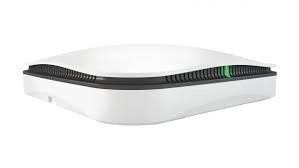
The sensor is designed to work straight out of the box on any network. It just needs to be registered to a dashboard. Then give credentials to the wifi or plug it into the ethernet. It takes so little set up. It can be mailed to a remote site and set up by anyone. All configuration is done in the web portal. All standard tests and alert thresholds come preconfigured. No set up is even needed, though you can definitely still customize it.
Aruba UXI Overview from Aruba Networks / Cape on Vimeo.
Aruba Dashboard
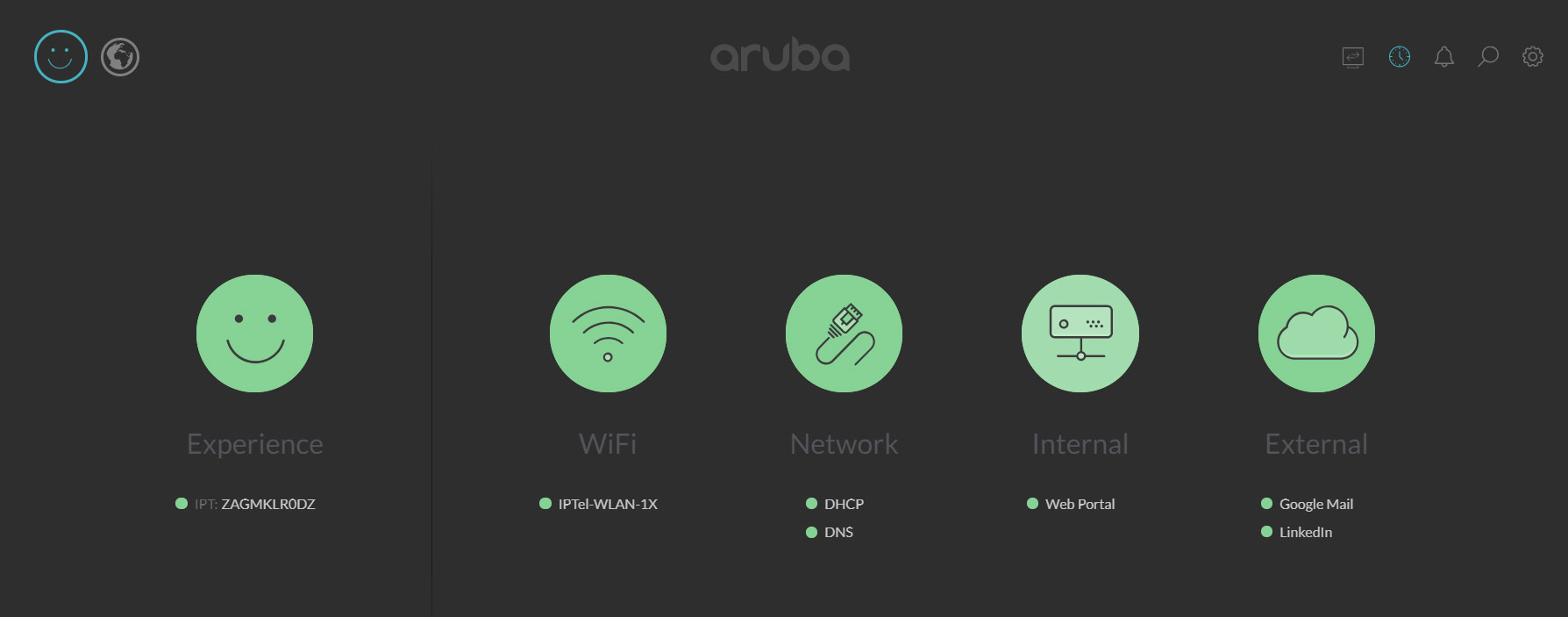
The dashboard is simple and easy to use. It gives you access to a lot of information about your network. Hover over any piece on the home page to get alert info. Then, click to drill down further and see a trove of other information, such as signal strength, channel, response times for things like dns or dhcp, even websites if you set them up.
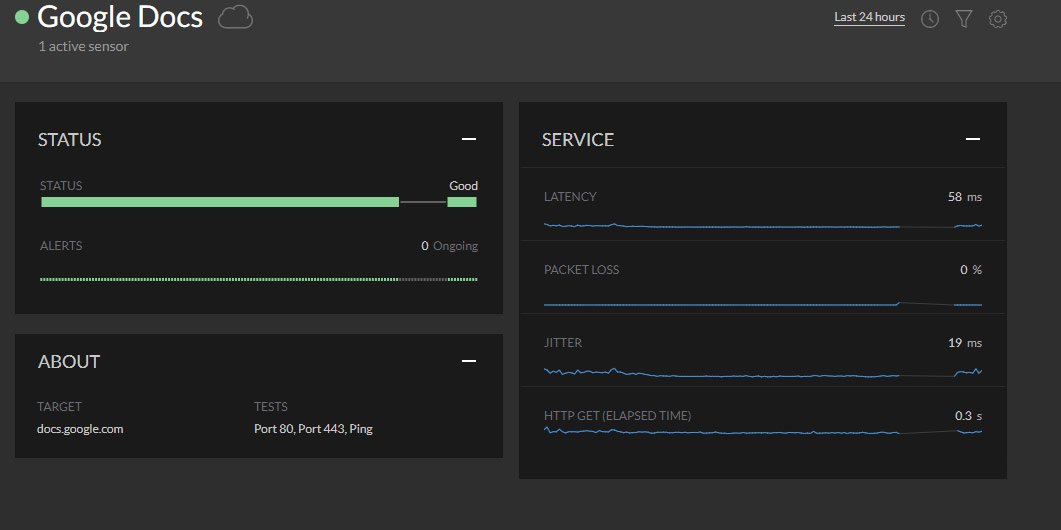
The sensor can be configured to check both internal and external services. Whether you use internal websites and fileshares, or Google docs and Microsoft OneDrive, you can test them all to be sure they are up and running. If they aren’t, the IT department is the first to know.
Proactive Alerts
Alerts are sent via email whenever certain customizable thresholds are met. This enables IT departments to know about a problem before a user has a chance to report it. They will also know exactly what went wrong without having to hunt around for the cause of the issue.
The alert says which service is down. Quickly letting IT know if the entire internet is down, or if its just the DNS service on a server. Website issues can also be shown through the alerts. Knowing exactly whats wrong, quickly enables the IT department to address the issue faster. This results in less down time and less unhappy users.
Cloud Accessibility
The dashboard and all data are hosted in the cloud. This allows for you to access it anywhere, at any time. No need to be on site to diagnose an issue. No worries about not being able to see data and alerts while a site is down.
Diagnosing issues is half the battle in the helpdesk world. Eliminating this problem, enables the IT department to be far more efficient and timely in resolving those issues.
Location, Location, Location
Arubas UXI sensor should be placed in a spot where wifi is used most, or problem areas that you would like more information on. It comes with a couple different ways to mount it. It can also be set on a desk or table just as easily.
A secure mounting bracket can be deployed in public areas without the fear of it disappearing. All it needs is power either provided by the included power adapter, or by a PoE solution. The sensor also isn’t just limited to wifi. It works over ethernet as well, so you can check all network connections at once.
A user experience sensor is a valuable tool for any company, small or large. The key feature is that it enhances the response time of any IT department. Faster response times mean less downtime, which means less time your company is running smoothly. The solution is constantly being updated with more features being added every day to make the jobs of you and your IT department easier.
Contact Zunesis for more information on this solution or other networking products for your organization.
Characteristics of Great Salespeople
My wife and I just spent a long weekend celebrating outstanding sales performance in the beautiful Colorado mountains with some incredible sales professionals. As the CEO and sales leader at Zunesis, I wanted to take some time away from the office to say “Thank You” in a tangible way and to spend time celebrating the consistent accomplishment of these outstanding sales professionals.

Throughout the weekend, I spent time thinking about why these specific individuals are so successful year after year. Throughout my career, I have had hundreds of people ask me what it takes to be successful in sales. Hundreds of books have been written on the subject of the sales process, sales methodology, sales discipline, prospecting, farming, and networking and yet we know from statistics that very few sales people actually achieve success and stay there.
As we celebrated great sales accomplishments this past weekend, I thought about the individuals I was with and arrived a few distinguishing characteristics that make these individuals great at what they do.
Team Mindset
Great salespeople know who is on their team and how to leverage them effectively. They do not operate as a lone wolf, instead they operate as a pack. They consistently want to control deals from start to finish, but they delegate quickly and make the most of the people around them.
In the Information Technology (IT) market that Zunesis operates in, the rate of change and the level of technical complexity demands a team mindset where sales people engage their solution architects, leadership, inside sales, marketing and operational personnel to get the job done.
This Team mindset also extends to our technology partners. Great salespeople leverage their vendors, distributors, and personal contacts to gain that extra edge and to get their customers the best and latest information possible. The very best salespeople also understand that they must drive the process forward from start to finish.
They understand that they own the “proactive juice” to keep everyone moving toward a common set of objectives. Great salespeople operate with a sense of urgency, leverage all of their team resources, and hold each member accountable to get the job done.
Sincere Customer Empathy
Great salespeople sincerely care about the success of their customers. They are advocates for their customers and they will fight hard to get what their customers’ need. Over time, customers figure out which sales people care about their success and which sales people only care about their commissions. This behavior is most recognizable when a customer is in trouble.
In IT, this may mean that a customer has an application or a data center that is down or not operating sufficiently to support the business. In these situations, great salespeople show up and jump in with both feet. They ask questions and attempt to triage what is going on and how their team can help. Great salespeople consistently rise to the occasion when the chips are down.
Creativity
Great salespeople have unique creativity. Putting deals together requires a flexible mindset, tremendous listening skills, and a willingness to think outside the box. I have watched great salespeople approach objections, budget constraints, and operational challenges with tremendous creativity.
Their creativity comes from a place of “never giving up” and always believing that they can find a way to help customers be successful. They operate with bubbling optimism which is rooted in the reality of the needs of their customers.
Great salespeople convince the rest of us that there is always a way to solve a customer need. What I have learned over the years is that optimism combined with creativity is the winning combination.
Integrity and Always Doing the Right Thing
Great salespeople take the long-term view of their career and work very hard to tell the truth, follow through on commitments, and always do the right thing. The sales world is littered with broken promises; but great sales people know how important their personal reputation is to their long-term success.
Cutting corners or skipping important steps may provide short term sales success, but the great ones know that long term success demands operating with consistent character. The very best salespeople also know that building trust with customers is the most precious and valuable commodity they can build. Trust takes time and great sales people do what is necessary to build trust with their customers.
Hard Work and Discipline
Ultimately, great salespeople understand that hard work and discipline are essential to have lasting success. They work very hard and they do the fundamentals even when they don’t feel like it. Great salespeople find ways to keep fighting even after stinging defeats and unfair losses.
Great salespeople are never victims and they look to learn from their disappointments. In fact, learning is a great fuel in their journey. I have never met a great salesperson who didn’t understand the importance of discipline and hard work.
These 5 characteristics of truly exceptional salespeople are not easy. Neither is the demanding profession of sales. If you are fortunate like me to work with exceptional people, you know how lucky you are. Greatness is rare and I am grateful that I get to work around the very best on a daily basis.
Aruba Instant Access Points
Years ago, the concept of purchasing and deploying enterprise grade wireless infrastructure was reserved for only the largest or wealthiest companies. The average small to mid-sized businesses were left to make compromises on features and performance because of the prohibitive price and deployment complexity associated with wireless infrastructure. Well no more.
Aruba Instant access points allow any business to deploy a full featured and scalable solution anywhere. Without compromising features often reserved for the most cost prohibitive solution. Aruba Instant has a place in the hair salon all the way to the corporate office. If you need a solid and secure wireless solution that doesn’t require a full-time worker to administer, than look no further.
What is Aruba Instant?
Aruba Instant is a wireless access point operating system and platform that does not require the purchase of hardware/virtual controllers for deployment. Instead Aruba instant access points leverage each other as virtual controllers. They work in a cluster like the standard campus deployment most are familiar with.
For small to mid-sized businesses, the most common deployment of wireless is less than 100 access points. This is fully supported by the Aruba instant deployment model. Not only does the deployment scale in size but it is innately redundant.
Each access point can act as the primary virtual controller if the current controller goes down. Furthermore, the access points come in a wide variety of models. Some support the newest Enterprise features such as 802.11ax, WPA3, and M-PSK.
Where is the value?
Almost all the current generation Aruba access points are sold as a unified AP. This deploys in an Instant cluster or as a campus AP controlled by dedicated controllers. By shipping a single image on all access points, Aruba has made the product fit all use-cases. It has simplified the ordering and provisioning of the product.
Additionally, if a customer does outgrow the instant AP deployment model, they can simply convert their existing access points to work with a controller-based solution. Never losing a penny on their existing investment. This use-case happens frequently. Aruba customers are always thankful to know that they haven’t thrown money down the drain as their business grow and they need to expand the reach of wireless connectivity.
Aruba Instant Tour
I will spend some time showcasing the features and simplicity of the Aruba Instant operating system. There are numerous guides online showing how to configure the APs in greater detail. I will give a brief overview of some of the included features.
There is also a community driven YouTube channel dedicated to the education of customers and partners called: Airheads Broadcasting Channel. This tour is meant for someone with 1-2 years of IT experience. Wired and wireless networking concepts will be used without explanation.
Logging In
The virtual controller is accessed through a web interface that is very similar to logging into a traditional Aruba Mobility controller. There are default credentials which are publicly available for the initial login.
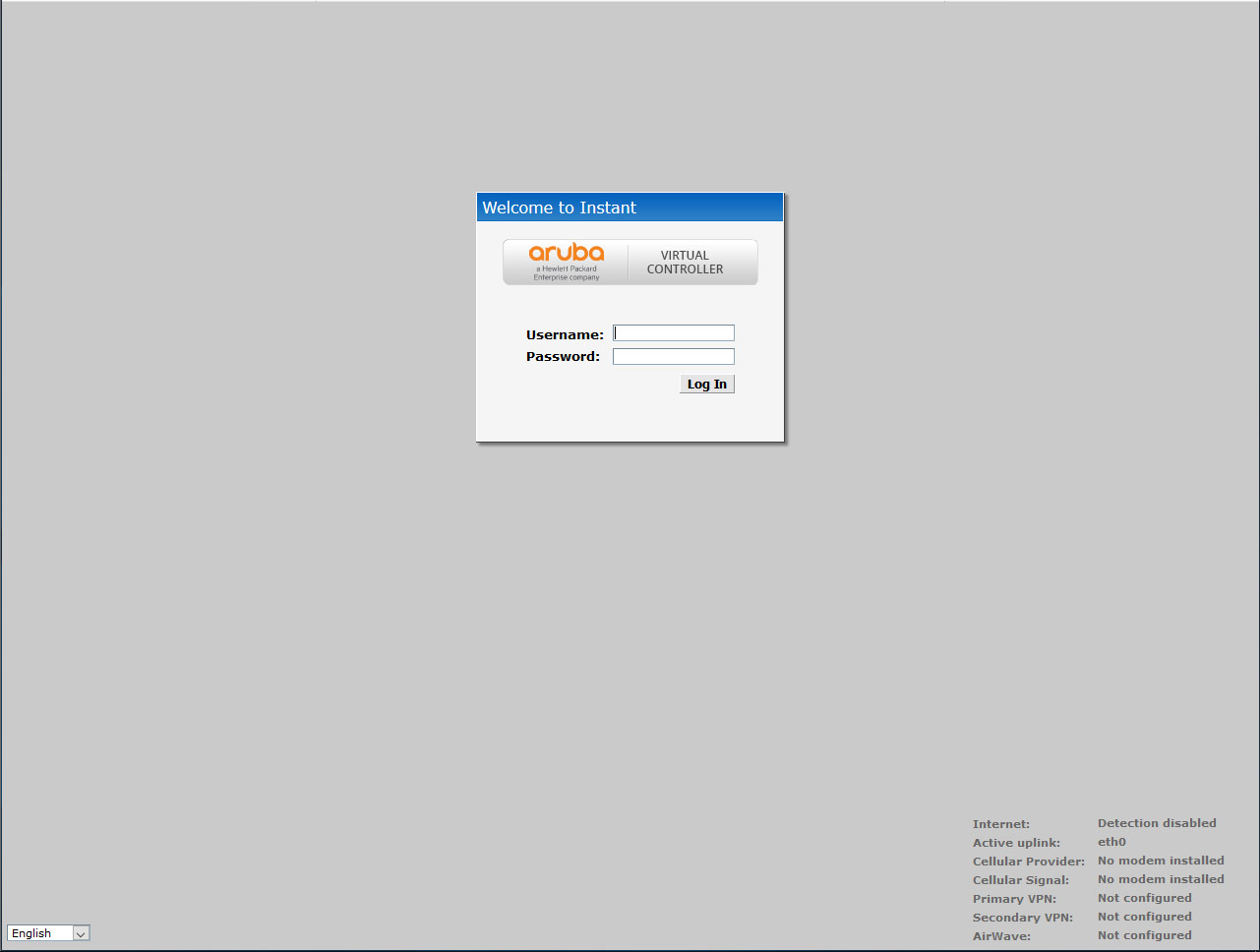
User Interface
The dashboard presented after the user logs in is very helpful. It will show everything from active wireless networks, cluster members, connected clients, and performance and health statistics.
Again, keep in mind that using this deployment model is free. There are no additional licenses or support fees to use the Aruba Instant operating system. All Aruba access points come with a lifetime warranty that include software/firmware upgrades.
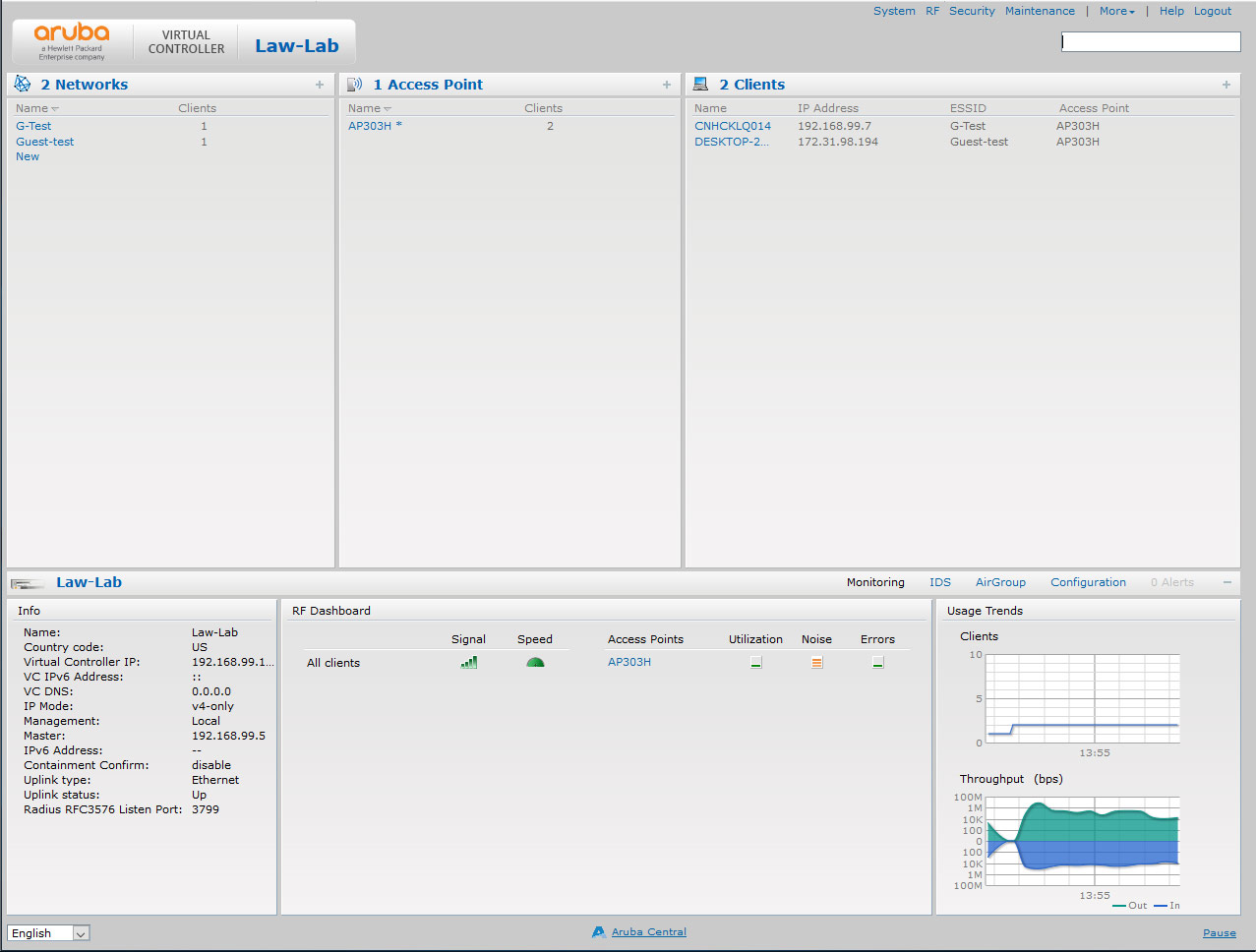
Advanced Features
The Aruba Instant operating system supports features like:
- Guest network with custom captive portal
- Radius authentication with COA
- Stateful firewall policies
- QOS\COS
- Internal guest provisioning for guest network
- IDS
Another feature that is surprising to see on this platform is AppRF. It differentiates what applications are in use on the network. It is of great value to administrators and engineers to be able to identify unwanted applications on the network and apply QOS policies to either limit or block them entirely.
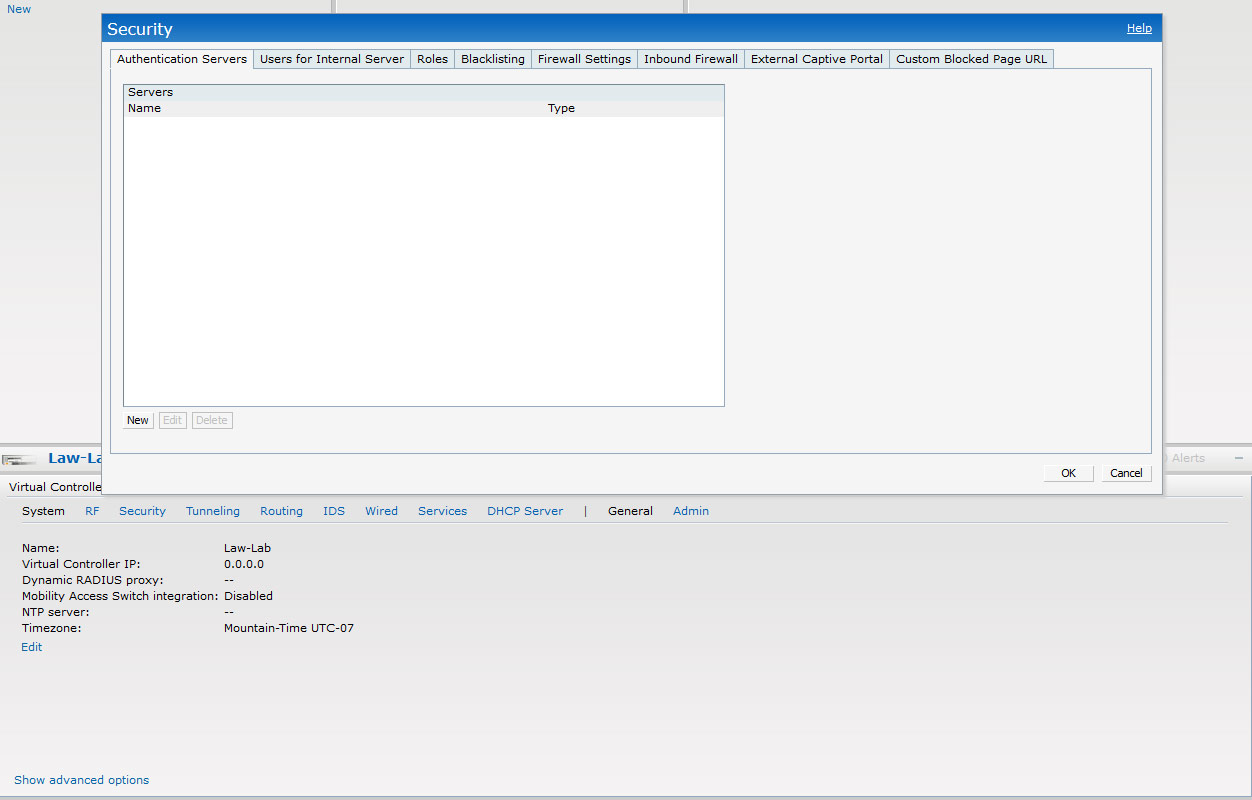
Third Party Integrations
Unlike other platforms that limit features in their respective introductory platform, Aruba supports third party integrations with firewall vendors, and even custom XML API services. Features that leverage location-based services are available using the Aruba Instant platform.
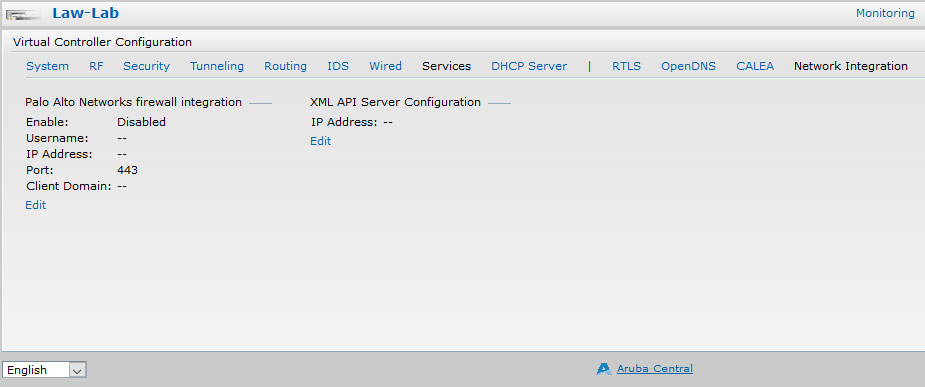
Overall, the platform is feature rich. It can do almost everything a traditional controller-based platform can do. The shear scalability of having the access points act as the controller grants a flexibility many in the industry have been looking for.
Small to mid-sized businesses should explore the possibilities of what the Aruba Instant platform can offer. A budget friendly option to consider for your networking needs.
Use the Networking Product Wizard on our site to find out the right switches, access points and network management solution for your organization.
HPE Primera
Last week, Hewlett Packard Enterprise introduced their new product- Primera. It’s a high-end storage platform which helps to redefine what is possible in mission-critical storage. The product combines the intelligence technology from the Nimble family of arrays with the reliability of the 3PAR array family.
Primera is ideal for mission-critical applications and large-scale consolidation for enterprises. Whereas, HPE Nimble Storage is suited more for business critical applications for small and medium enterprises.
3PAR customers will find that Primera does not support some of their favorite capabilities. Primera will not include the Adaptive Optimization Technology that 3PAR uses to tier data between hard disks. Some of the configurability of 3PAR is not available as well. Beta testers have found that it is taking an adjustment to get used to Primera doing the work for them vs having to do ongoing adjustments.
In today’s world, IT professionals are looking for something that eliminates the time needed to manage infrastructure. Primera helps consolidate and simplify. The main concerns for most organizations are availability and safety of one’s data.
Three Unique Experiences
HPE explained that Primera was built to deliver three unique experiences.
- On-demand experience that ensures infrastructure and data are instantly available.
- Application-aware resiliency: See beyond the storage layer combined with analytics to prevent issues from occurring.
- Predictive acceleration: Combining massively parallel architecture with embedded real-time analytics to ensure that applications and business processes are fast all of the time.
Intelligent Data
Like HPE’s other storage options, Primera will use InfoSight predictive analytics for optimizing performance and reliability. Significant breakthroughs include 93% less time spent on managing storage, the ability to predict and prevent issues, and accelerate application performance.
InfoSight looks at millions of sensors and gathers information to help predict and prevent several issues. An intelligent storage platform will allow for organizations to have agility and performance without hampering IT’s ability to keep up with new demands.
Key Features:
- “All-active” multi-node parallel architecture for resilience and scaling with instant failover capability. Allows for 122% faster Oracle performance.
- Data Services have been decoupled so they can be deployed and restarted independently of each other
- User-upgradable without reboots
- No Tuning Required – every resource is always balanced
- Timeless storage: Data-in place upgrades, free controller refresh, all-inclusive software.
- As-a-Service Experience: customers can pay for only what they use.
Keep It Simple
Simple is key in today’s fast paced IT world. As companies venture into more hybrid environments, it is more important for data to be managed appropriately.
Primera delivers a simple, user experience. It can be self-installed in less than 20 minutes. Storage can be provisioned in seconds. Software can be upgraded by customers in 5 minutes without disruption.
100% Availability
HPE offers a standard of 100 percent availability with this new unit. They promise to credit customers with “up to” 20 percent of the value of their Primera assets in the event of an outage. It comes standard with HPE Proactive Care. There is no requirement of any special contracts or onerous terms.
The product will be available in three array models: HPE Primera 630, HPE Primera 650 and HPE Primera 670. It comes in a 4U chassis with space for up to 24 SSDs, with 16 SAS-based slots and eight NVMe-based slots. The NVMe slots can also be used for storage-class memory such as Intel Optane.
Inside the Primera system are four nodes, each with two Intel Xeon processors. Each node has its own power supply with its own backup battery. The maximum memory that can be initially purchased is 2 terabytes.
HPE plans to sell all-flash and all-HDD models of Primera but customers will not be able to tier data between them. The expectation is that customers will buy the all-HDD models for special use cases such as video surveillance, medical imaging and online archives.
It will be available for order in August 2019. Shipments should be made soon after that. Contact a Zunesis account manager if you would like more information on this storage platform or any other storage solutions for your organization.




